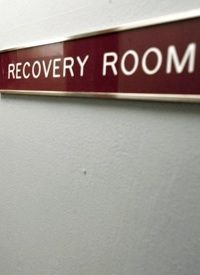
A 20-year-old woman is suing one of Michigan’s most notorious abortionists for a 2008 abortion she claims he performed against her will. Caitlin Bruce was 18 years old, unemployed, and pregnant when she walked into Dr. Abraham Hodari’s Feminine Health Care Clinic in Flint, Michigan, in April 2008 to follow through on her father’s recommendation that she abort the baby she was carrying from her much older boy friend.
Bruce said her father told her she was too young, she hadn’t finished high school, and had no way to support a baby. “I was really confused, asking everybody else what I should do,” she told a reporter for ABC News. “Everybody told me, ‘You were too young.’ What I really wanted to hear was, ‘We’ll help you out.’”
Ultimately, still confused and uncertain about what she should do, Bruce headed to Hodari’s clinic, where a technician performed an ultrasound and showed her an image of her six-week-old pre-born baby. Bruce said that picture of a real, live baby inside her caused her to seriously doubt her decision to terminate the pregnancy.
Moved to an examination room, Bruce was met by Hodari, who assured her that the procedure would be quick and convenient. “You’ll be okay,” Bruce recalled the abortionist as saying. “It’ll be fine. It’s a quick procedure. It’ll just feel like a cramp in your stomach.”
Hodari’s words did nothing to dispel Bruce’s conviction that she should not abort her baby, and as Hodari began to move ahead with the abortion, the young woman pleaded for him to stop. Instead, with an assistant pinning her to the exam table, Hodari forcefully continued the procedure while Bruce resisted, screaming and trying to pull her legs together. Hodari, whom she described as “very irate,” even seemed to give up on the procedure at one point, telling her she could go home. But as Bruce relaxed, the abortionist renewed his assault on her, and quickly complete the abortion.
“They ripped the life out of me that day,” said Bruce, recalling how Hodari ordered his assistant to hold her down while the abortionist went to work on her. “They had my arms pinned. His weight was all on my chest, and then he took his hand and he had it so tight on my mouth that it was muffled. I was screaming and I was crying.” Bruce said that she felt “the worst pain in my stomach. It really felt like he was ripping everything in me out, that’s how painful it was.”
While Hodari’s attorney in the lawsuit insist that Bruce changed her mind too late in the process and the abortionist had to finish in order to protect his patient’s health, Bruce’s attorney, Tom Pabst, vigorously refutes the claim, arguing that Hodari had not yet reached the point of no return in the abortion. “The water wasn’t broken,” Pabst told ABC News. “She hadn’t felt the pain her in belly.”
Even the National Abortion Federation concedes that Hodari should have honored Bruce’s wishes and stopped the procedure, regardless of where he was in the process. “In any medical procedure … if a patient says stop, a patient’s wishes need to be respected, said Vicki Saporta, the group’s president. “But the patient needs to be informed about the risks of stopping the procedure.”
Even by abortionists’ standards, Hodari has a seriously flawed record. Throughout his career he has been involved in at least four deaths tied to abortions, was convicted of destroying private medical records, and has been cited for dumping the body parts of his pre-born victims into a dumpster. According to Lifenews.com, Hodari was fined $10,000 by the Michigan Attorney General for a botched 2003 abortion. The procedure, performed on patient Regina Johnson by an associate working in Hodari’s clinic, led to Johnson’s death the next day from “anoxic encephalopahy due to cardiac arrest,” according to an official report. In the wake of the tragedy, Hodari was found him guilty of “negligence,” “incompetence,” and lacking in “good moral character,” according to Lifenews.com, and the abortionist quietly paid the fine.
In January 2004, 15-year-old Tamia Russell died after an abortion at Hodari’s Womancare clinic in Southfield, Michigan. The procedure was paid for by Russell’s 26-year-old boyfriend, and her legal guardian had no knowledge of the abortion until it was too late to save her. Similarly, in 1996 Chivon Williams was discharged from another of Hodari’s clinics following an abortion, even though she was complaining of stomach and chest pains. A few hours later, she was pronounced dead.
In late 2009, as the pending lawsuit and stories of the abortion deaths at his clinics made the news, Hodari put his three abortion clinics up for sale, a move that some speculate may be preparations for a move back to his native Argentina. Nonetheless, Hodari continues to defend his record as an abortionist. “I am there because I want to help woman have safe abortions,” he said. “Look at my records. I have done more abortions and longer than any doctor in Michigan.”
Photo: Troy Newman, of Operation Rescue (out of picture), shows the unhealthy conditions at what used to be Central Women’s Services abortion clinic in Wichita, Kan: AP Images



